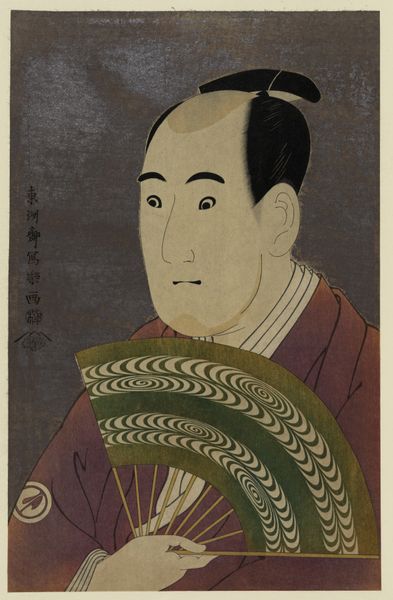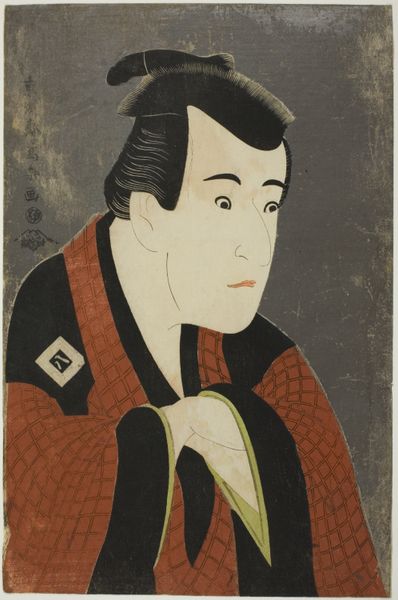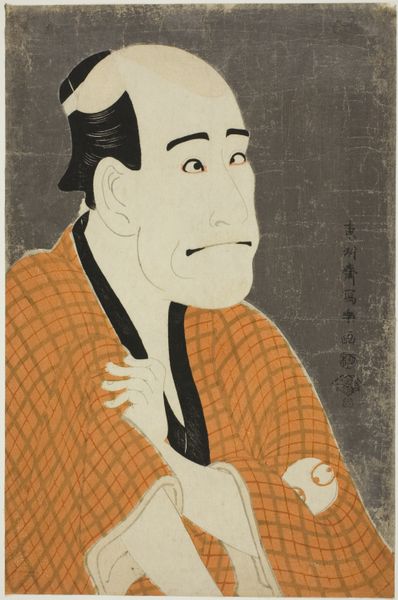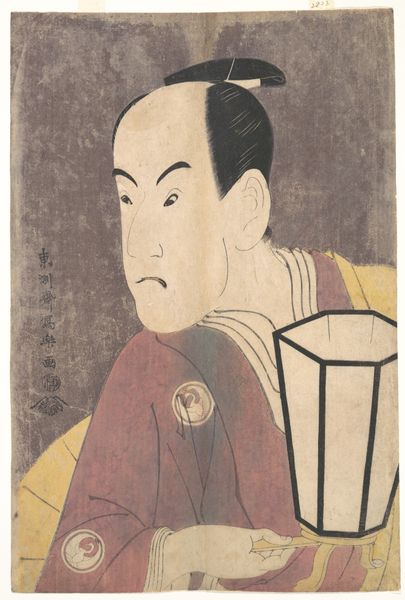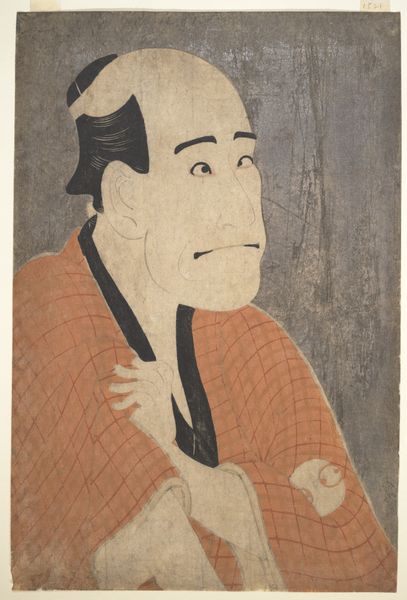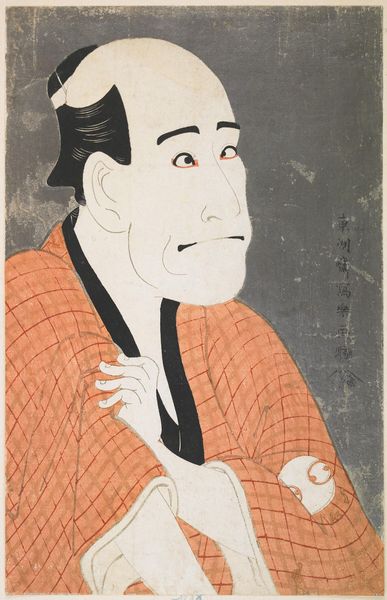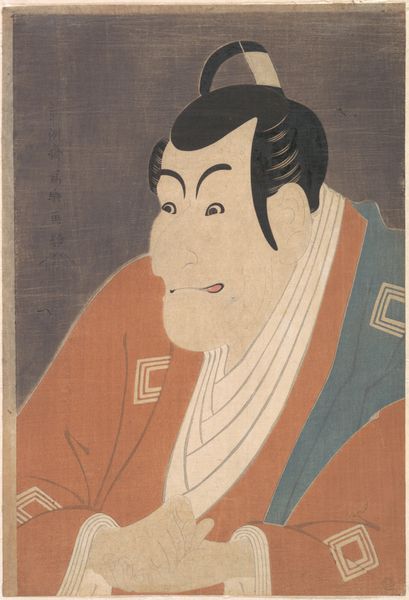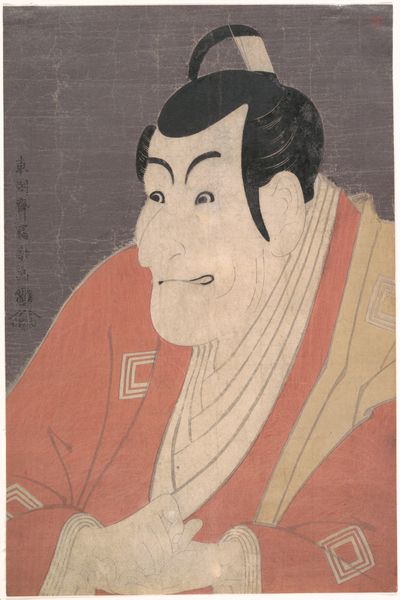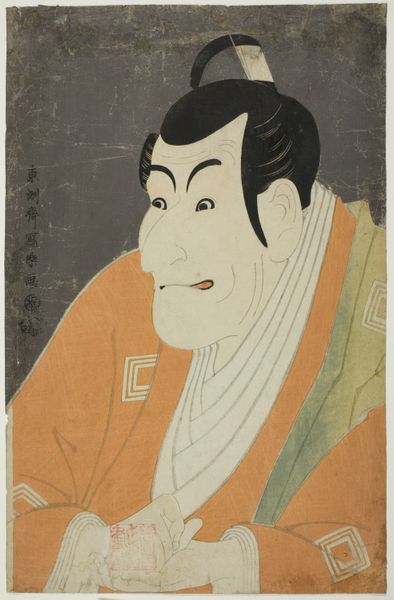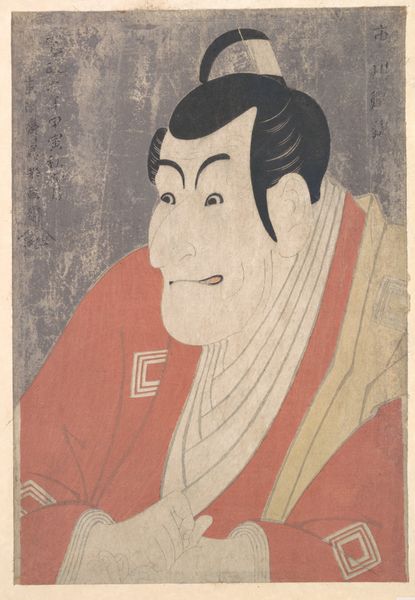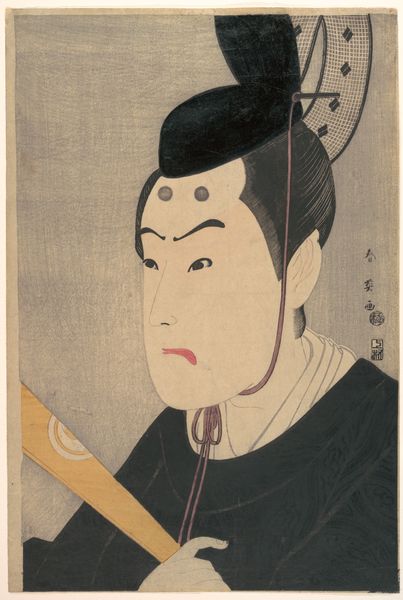
# print
#
caricature
#
asian-art
#
caricature
#
ukiyo-e
Dimensions: 37.9 × 25.0 cm
Copyright: Public Domain
Editor: Here we have "The Actor Sawamura Sojuro III as Ogishi Kurando," a print made in 1794 by Tōshūsai Sharaku, currently at the Art Institute of Chicago. I'm immediately struck by the almost cartoonish expressiveness of his face. What's your read on this piece, and perhaps the artist's intention? Curator: Well, Sharaku's prints were deliberately challenging to the norms of ukiyo-e. This wasn’t just about representing the actor, but critiquing the Kabuki world and the cult of celebrity. Look at the actor's exaggerated features - the long face, the wide eyes. How do you think this exaggeration plays into its social commentary? Editor: It seems like it satirizes the actor, possibly demystifying the theatrical persona and pointing to the human, maybe even flawed, individual underneath. It feels pretty bold for its time. Was this a common sentiment, or did Sharaku stand apart? Curator: Exactly! Sharaku’s brief career coincided with a period of strict censorship. These works, with their exaggerated realism, challenged the idealized portrayals often commissioned by theaters and their patrons. He disrupted the conventional commercial relationship, essentially biting the hand that could have fed him. Can you see how his unflinching portrayal reflects a tension between artistic expression and the social pressures of patronage? Editor: Absolutely. Knowing this context, it definitely reframes the image for me. It isn't simply a portrait, it's an assertion, almost a protest. Curator: And it tells us so much about the late Edo period – the anxieties around social roles, artistic integrity, and the growing tension between the merchant class that fuelled the Kabuki theatre and the ruling elite. This image wasn't passively consumed; it actively participated in a conversation. Editor: This has changed my whole understanding of the work. What I thought was merely a curious portrait is actually a bold social statement. Thank you. Curator: Precisely. And that's the power of seeing art through a historical lens.
Comments
No comments
Be the first to comment and join the conversation on the ultimate creative platform.
